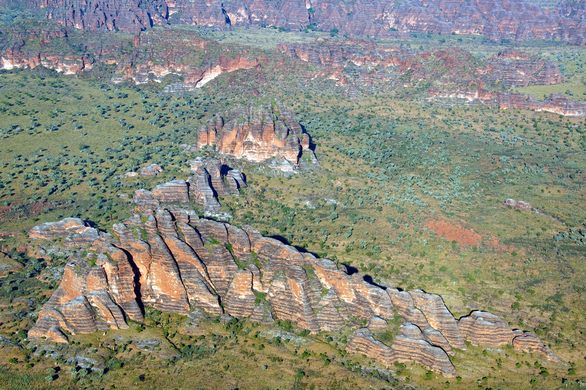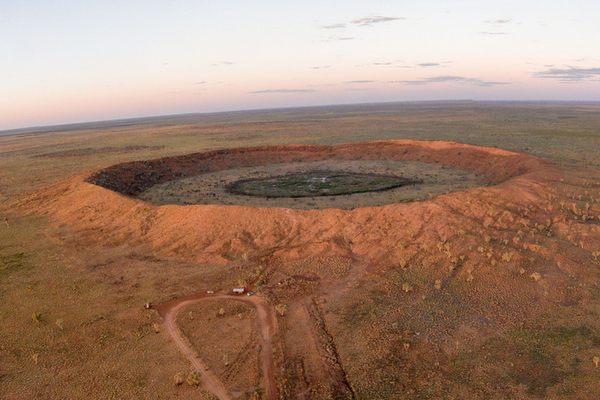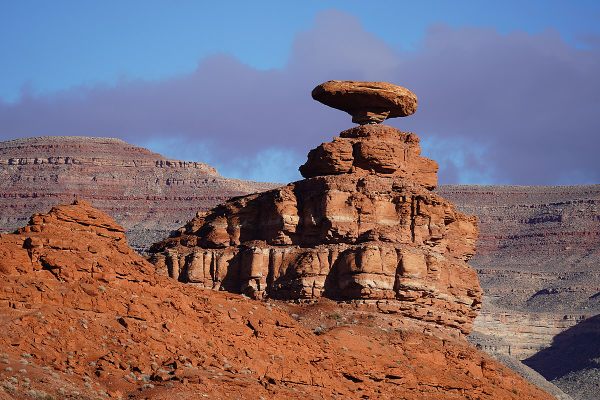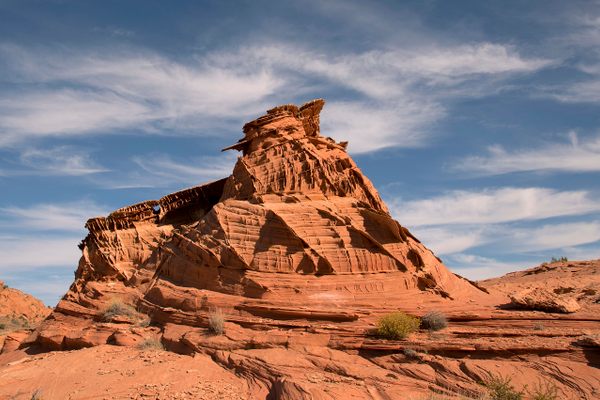AO Edited
Bungle Bungle Range
These Australian rock formations look like Martian beehives that have grown up out of the landscape.
Rising out of the landscape of the Purnululu National Park, the terrifically named Bungle Bungle Range are beehive-shaped rock formations that are thought to have been caused by the erosion of a very ancient meteorite crater.
The gem of the Purnululu National Park in Western Australia, the geologic range is one of the most impressive stone formations on Earth, and maybe even Mars, which is where they seem to be from. Forming rounded cones and cylindrical towers, the rocks are made of porous conglomerate rock, the texture of which gives them their oft-remarked upon beehive look. The sediment that formed the rocks is thought to have been deposited 350-375 million years ago, slowly eroded from the wind and rains of the surrounding desert.
The “Bungle Bungles,” as they are often called, also have a distinct orange-and-black-ringed pattern running all down their surface. This is caused not only by the conglomerate nature of their make-up but from water getting trapped in denser layers, allowing algae to grow and form the darker colorations.
The rocks have long been an important site of the Jaru and Gidja peoples, who’ve lived in the region for between 20,000 and 40,000 years. The rocks were only “discovered” by outsiders in 1983 and they became a UNESCO World Heritage site in 2003. Today, the rocks are still a fascinating feature, though their remoteness prevents them from being too overwhelmed with tourists.
Know Before You Go
Access to the park by road is via Spring Creek Track, from the Great Northern Highway approximately 250 km (160 mi) south of Kununurra, to the track's end at the visitor centre. The track is 53 km (33 mi) long and is usable only in the dry season (about 1 April to 31 December), and only by four-wheel-drive (4WD) vehicles.
















Follow us on Twitter to get the latest on the world's hidden wonders.
Like us on Facebook to get the latest on the world's hidden wonders.
Follow us on Twitter Like us on Facebook